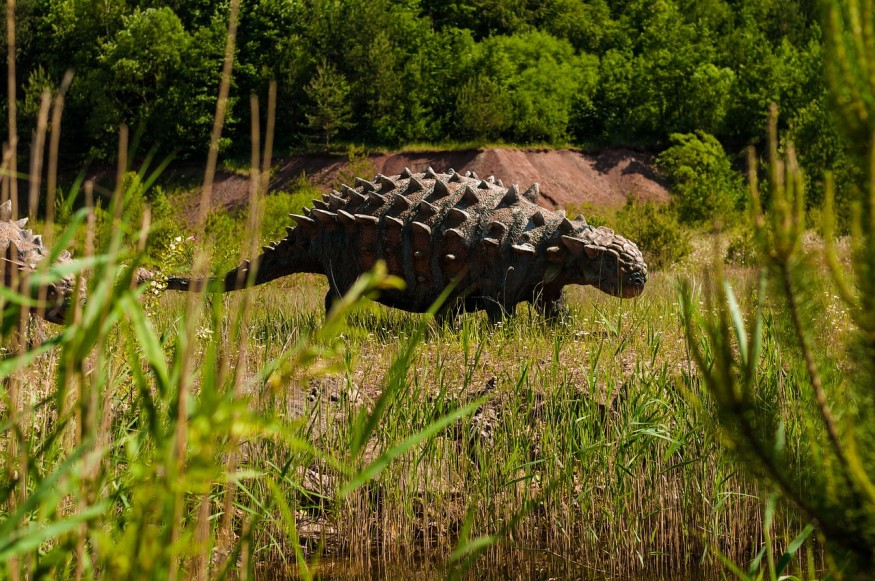
In Canada, a mummified Ankylosaur dinosaur, or armored dinosaur, has recently been unearthed, providing paleontologists information on the diet and prehistoric ecology of herbivorous dinosaurs that roamed the Earth about 110 million years ago.
The scientists found well-preserved fossilized plants inside the belly of the animal, particularly ferns, which apparently grew after its environment was burned by fire.
The mass within its stomach is as large as a soccer ball and contained selected fern varieties mixed with charcoal traces. According to the paleontologists, the animal was picky in its diet.
Royal Tyrrell Museum paleontologist Caleb Brown says that it is very rare to see the preserved meal of a dinosaur. Their findings were published in the June 2 issue of Royal Society Open Science. Brown says that there is finally definitive proof about the diet of a herbivorous species of dinosaur.
DON'T MISS THIS: Shamanic Ritual Involving "The Toad" Kills Photographer
The mummified animal was found inside a mine in 2011 in the northern part of Alberta. It is from the family of nodosaurs, which belongs to the ankylosaur dinosaur group. It is similar to the more famous Ankylosaurus in that it also has a bony plate covering. It also features a large spine protrusion coming out of each shoulder. It was short-legged, as well as round and squat.
The dinosaur would have had a minimum weight of 1.5 tons, and its length is 18 feet. Scientists speculate that it stayed along coastlines and had a sudden death, after which the sea swept it away. It got buried in seafloor mud, which then protected its body from scavengers and storms. Then, brittle rock slowly formed around it, resulting in its preservation. The remains that the scientists found had keratin, skin, and a fossilized skeleton.
The team published the animal's description and named the dinosaur Borealopelta markmitchelli in 2017. Now, the researchers studied the contents of the animal's stomach. According to Brown, they found preserved fragments of stem and leaves, along with charcoal from burned wood. They estimated that it died in late spring up to midsummer due to the ingested plants' maturity, eaten in the middle of plant growing season.
FIND OUT MORE: Indigenous Alaskan Tribes May Have Hunted Sea Otters Thousands of Years Ago, but Not for Food
Roughly 85 percent of the leaf fragments found belonged to various fern types. The researchers were surprised to find that horsetails and other common plants were not included, and that coniferous tree and cycad leaves, which dominated the environment then, were only scarcely present.
This led them to suggest that the animal could have preferred particular ferns and ate only its favorites as it ignored other plants. Based on the discoveries of fossilized vegetation in nearby sites, the scientists had an idea regarding what plants were available to the nodosaur.
Charcoal in the stomach also indicated recent forest fire; the nodosaur ate young shoots that grew after the burning. Brown explained that re-growing plants are more nutritious and digestible, and the ankylosaur would have preferred eating plants that recently burned.
Brown says that it is the first evidence that dinosaurs took advantage of fire ecology, which could have been vital to them. A single animal's stomach contents may not let them conclude on its overall diet, but if charcoal is to be found in the stomachs of other preserved dinosaurs, this could strengthen the theory that herbivorous dinosaurs thrived in areas that experienced wildfires.
READ NEXT: Police Arrest One of the Men Who Fed the Pregnant Elephant a Firecracker-Stuffed Pineapple
© 2025 NatureWorldNews.com All rights reserved. Do not reproduce without permission.





